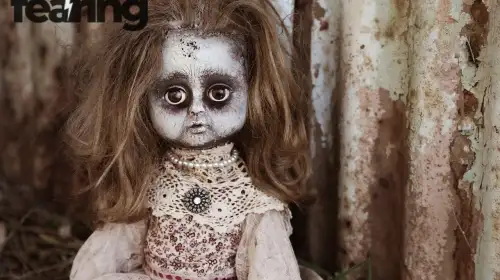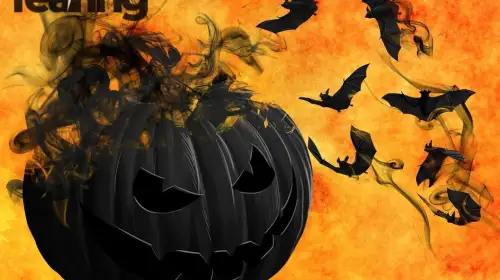Urban Legends That Still Terrify the World reveal something powerful about humanity — our need to explain the unexplainable through stories. Whether whispered in classrooms, posted on message boards, or adapted into streaming horror series, these legends travel faster than ever. They thrive because they balance fear and possibility: just real enough to make us look over our shoulders.
Folklorist Dr. Sarah Bartlett summarizes it best: “Urban legends survive because they disguise morality as mystery. They warn us, but they also entertain us.”
The Psychology Behind Urban Legends
Psychologists call urban legends “social fears wrapped in narrative.” Each reflects anxieties of its era — disease, technology, strangers, or death. In 2025, misinformation and social media amplify these stories globally, blurring the line between fact and fiction.
According to the Cultural Narrative Study 2025, 68% of adults have heard an urban legend they believed at least once. Cognitive scientist Dr. Chris French explains, “Our brains are wired for pattern recognition. When we don’t understand something, we fill in the blanks — often with fear.”
The Timeless Appeal of the Unknown
Humans have always shared stories about hidden dangers. Ancient myths of monsters guarding rivers evolved into warnings about highways or dark alleys. The format changed; the purpose stayed the same — to keep us cautious.
As horror author Neil Gaiman once said, “Legends are truth in disguise — nightmares dressed as advice.”
The World’s Most Famous Urban Legends
From Japan’s cursed ghosts to America’s roadside killers, these tales continue to shape local culture and inspire film, art, and even tourism.
| Legend | Origin | Description | Cultural Message |
|---|---|---|---|
| Bloody Mary | USA/UK | A vengeful spirit summoned in a mirror | Punishment for vanity and curiosity |
| Slenderman | Internet (2009) | Faceless tall figure who stalks children | The danger of online myth-making |
| La Llorona | Mexico | Weeping woman searching for her children | Warning about grief and morality |
| The Vanishing Hitchhiker | Global | Passenger disappears mid-ride | Mortality and the fragility of trust |
| Kuchisake-Onna | Japan | “Slit-Mouthed Woman” asks, “Am I beautiful?” | Vanity and the unpredictability of evil |
| The Hookman | USA | Escaped killer with a hook for a hand | Cautionary tale about young love and danger |
| The Black Volga | Eastern Europe | Phantom car that kidnaps victims | Fear of authority and surveillance |
| Resurrection Mary | USA | Ghost seen hitchhiking near cemeteries | Mourning, nostalgia, and restless souls |
| Polybius | USA | Mythical arcade game that caused madness | Technology and mind control paranoia |
| The Bunny Man | Virginia, USA | Murderer in a rabbit suit haunting a bridge | The absurdity of suburban fear |
Sociologist Dr. Helen Fisher notes, “The strength of an urban legend isn’t in its proof — it’s in its possibility.”
How Legends Spread in the Digital Age
In the 21st century, urban legends have migrated from campfires to algorithms. Platforms like Reddit, TikTok, and YouTube are now global storytelling machines. Hashtags such as #CursedVideo or #HauntedObject regularly reach millions.
Tech anthropologist Marina Lopez explains, “Virality is the new folklore. The internet is the campfire of our generation — we just replaced smoke with pixels.”
The creepypasta phenomenon — short horror stories shared online — transformed local myths into international nightmares. The Slenderman case, for example, inspired not only video games but also real-world tragedy, proving the psychological power of digital folklore.
Regional Legends That Still Haunt Local Communities
Even in a connected world, local legends maintain their identity, adapting to reflect cultural fears.
Scandinavia: The Mare, a spirit that presses on sleepers’ chests, remains tied to sleep paralysis myths.
Greece: The Strigoi, undead spirits, inspired vampire lore long before Dracula.
Brazil: The Loira do Banheiro (Bathroom Blonde) — a South American version of Bloody Mary.
Russia: Rusalka, ghostly women luring men into rivers, merge myth and morality.
Turkey: Karakoncolos, a winter demon said to trick travelers with riddles in the snow.
Folklorist Evelyn Chase observes, “Legends adapt like viruses — they mutate to survive the fears of every culture.”
When Fear Becomes Collective Memory
Urban legends often stem from real events twisted over time. The Vanishing Hitchhiker may trace back to wartime accidents; La Llorona could have originated from colonial tragedies. What begins as rumor hardens into folklore — then into identity.
In many towns, these stories attract visitors year after year. The ghost tours of Mexico City, Athens, and New Orleans thrive on this cultural blend of history and myth. Tourism board data from 2025 shows dark folklore tours now account for 15% of urban tourism revenue in Europe and the Americas.
Historian Dr. Ibrahim Kaya explains, “Cities market their myths because they humanize history. Fear, after all, is one of our oldest currencies.”
Why We Still Believe
Psychology reveals that belief in urban legends isn’t irrational — it’s emotional. They offer moral clarity in uncertain times. When technology feels overwhelming, these stories simplify danger into something we can visualize.
Cognitive anthropologist Dr. Pascal Boyer writes, “We don’t believe in ghosts because we’re foolish. We believe because ghosts are familiar — they behave like us, only without consequence.”
This is why every generation invents new fears: cursed texts, haunted AI, disappearing influencers. Each legend mirrors society’s anxieties back to itself.
The Role of Media and Film
Cinema has immortalized many of these tales. Films like The Ring (Japan, 1998), Candyman (USA, 1992), and La Llorona (Guatemala, 2019) turned oral folklore into global horror icons. Streaming platforms continue this tradition, blending documentary with myth — such as Haunted Latin America and Cursed Films.
Media critic Lena Ortiz comments, “The best urban legends feel plausible. That’s why found-footage horror works — it invites us to doubt everything.”
Urban Legends and the Future of Fear
As artificial intelligence and augmented reality evolve, new legends emerge around digital entities — haunted VR rooms, cursed chatbots, or disappearing online profiles. The boundaries between fiction and experience are dissolving.
Parapsychologist Dean Radin warns, “We’re building ghosts out of data. The next haunted house will be the cloud.”
Yet, whether told by AI or ancestors, the emotional architecture remains the same: fear is the thread connecting every version of humanity.
The Power of Story
Urban legends persist because they satisfy a fundamental human need — to explain danger through story. They turn chaos into narrative, giving fear a face and consequence.
Author Stephen King once said, “We make up horrors to help us cope with the real ones.” And in every whispered legend — from ancient spirits to digital phantoms — we recognize that truth.
FAQ
Q1: What defines an urban legend?
A1: A modern myth or story, often anonymous, that circulates as fact and reflects cultural fears.
Q2: Why do people believe urban legends?
A2: They tap into psychological triggers — fear, morality, and uncertainty — making them emotionally believable.
Q3: Are any urban legends proven true?
A3: Some are rooted in real events or crimes but exaggerated through retelling.
Q4: How do social media platforms spread these stories?
A4: Algorithms amplify emotional content, helping legends travel faster than ever before.
Q5: What’s the most famous urban legend today?
A5: Slenderman and La Llorona remain the most globally recognized in 2025.
Sources
Society for Psychical Research
New Scientist – Psychology of Fear




